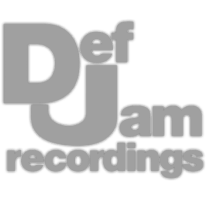Professional Analog Mastering.
Professional Analog Mastering.










First, let’s check out an A/B mastering chain - both mastered to -8 LUFS. One is mastered with maximization, and the other mastered with the Pro-L2 set using its modern algorithm.
Now, of course, using one limiter isn’t how most people would master - but I want to show how I’m able to reach about -8LUFS with maximization and saturation spread amongst multiple processors. This level is a bit high in my opinion but this is for the sake of showing it can be done.
By the end of this particular chain, maximization causes about 1.5 to 2dB of attenuation to the peaks and uses gradual attenuation when it does compress. Meanwhile, limiting alone would necessitate up to 7.5dB of attenuation for this particular mix.
Watch the video to learn more >
Mastering without brick-wall limiters isn’t too difficult - first, it helps to know that the majority of maximizers begin to compress more heavily around the -2 to -1dB mark.
So it helps to start off with your peaks around this level. This way you’re not amplifying peaks into the ceiling like you would with a limiter; instead, the low-level signals are the majority of what's being amplified while the peaks are affected to a lesser extent.
Maximization does impart harmonic distortion, more so than limiting, but that does depend heavily on the processor used.
This is why I recommend the Pro-C2 due to its mastering algorithm - by blending the wet and dry dials and having auto makeup gain off (that’s important) I get a lot of control over the low amplitude aspects of the track.
By adjusting the threshold I can determine the exact range that’s amplified, and with the mastering algorithm, I can ensure distortion is kept at very low levels.
Due to how much control it gives me and how minimal the distortion is, I can rely on this processor somewhat heavily.
In this chain, I set the threshold to -30dB and used a soft knee - meaning everything below -30dB is amplified a fair amount, while the amplification occurs to higher amplitudes to a lesser extent.
How you process is of course up to you, but wanted to show what I’m doing here.
Then, I chose to use this Omnipressor plugin - just inserting the plugin maximizes lower amplitudes by about 5dB. Then, with a 1.1:1 ratio and only 0.5dB of range in either direction, I can compress the signal when it’s above my threshold and amplify when it’s below.
This very subtle control of the peaks and the signal below the peaks evens the dynamics.
Next up I inserted the Weiss MM-1 set to about 40%. In the future I may not use this processor, it’s really not doing too much even at this higher level, but I built it into the chain here so I’m hesitant to change it, and at least the effect is just about distortion-free.
Notice how no peak attenuation is occurring, and the limiter isn’t engaged.
Next, the PSP Vintage Warmer is used for its knee function. The drive acts more like a limiter, but the knee amplifies quieter details before very gradually compressing higher amplitudes.
If you use this plugin, I recommend introducing oversampling, which is called Fat on this plugin, not sure why.
Also, the multiband setting is super helpful, since it allows for band-specific release times. So, if I notice the highs in the peaks are getting a little lost, I can reduce the release time to help return them to unity more quickly.
A quicker release for higher frequencies shouldn’t cause more distortion, but it would for the lower frequencies, so be careful with that.
At the end of tweaking the settings, I’m getting about 0.5 to 1dB of attenuation.
So, so far we’ve introduced mild harmonic distortion with our 4 processors and attenuated the peaks by 1.5dB at most. The other 3 processors won’t attenuate the peaks any further, but I’ll discuss those in a moment.
However, the loudness has increased from -16 LUFS to -10.5LUFS already.
Let’s listen to these processors enabled one at a time so we can hear how they’re collectively pushing quieter details forward.
Watch the video to learn more >
Instead of relying solely on maximization, harmonic distortion can be used to increase perceived loudness.
Generating harmonics fills gaps in the frequency response and amplifies musical frequencies already present in the mix and arrangement.
The Ozone Exciter is a good option - I’ll use subtle settings that work well for each band.
It’s really not doing too much, but after trying it and comparing it to Saturn 2 I enjoyed how it brings some percussive elements forward.
Lastly, the Oxford Inflator and the Oxford Limiter both offer great maximization options.
The inflator is arguably more aggressive with higher levels of distortion, the limiter’s Enhance function is subtle but noticeable nonetheless.
The inflator’s metering makes it look like significant amplification is occurring, but it’s only amplifying by about 1dB with these settings.
Also, a slightly positive curve prioritizes maximization over harmonic distortion with this plugin.
Lastly, we have the Oxford Limiter’s Enhance function - set more aggressively, but again the effect is pretty subtle.
As you can see I’m not attenuating the peaks - just amplifying lower amplitude levels.
So all in all, the goal isn’t to change the mix all that much - it’s an attempt to find the most subtle waveshaping possible to bring up quieter details while leaving peaks alone as much as possible. The processors shouldn’t alter the frequency response aside from the effect of harmonic distortion with the exception of the PSP warmer which amplifies the lows slightly.
The harmonic distortion caused by maximization can definitely be a problem to some, but it's pretty comparable to the Pro L2 unless you’re using a lot of additional look-ahead. The gain of a limiter is cleaner for sure, but that’s because it’s basically the same as increasing a fader’s level or clip gain.
The brick wall limiting itself will cause harmonic distortion, similar to how a maximizer’s waveshaping causes harmonic distortion.
I’ll cover other genres in a moment, some pros and cons of the method, and so on, but let’s take an extended listen to the chain-enabled 1 plugin at a time. Feel free to skip ahead if you’d like.
Watch the video to learn more >
One of the biggest concerns I saw with the last video is how something like this would work for EDM, which makes sense.
A big part of the sound is aggressive loudness mixed with distortion to peaks. That said, a clipper is probably a better option than a limiter if that’s the goal - since the more aggressive distortion makes up for some of what’s lost from transients when they’re truncated.
However, I was surprised by how well this method works for the genre.
Some of that quintessential distortion is gone, but overall it’s an enjoyable sound. It’s probably not an option if you want -5LUFS masters or something like that, but if anything, combining this method with limiting or clipping could likely help most EDM engineers reach louder levels without the need for attenuating peaks as significantly.
I’ll tweak some settings of the chain to work with the EDM mix I have here, but I’ll keep everything just about the same. With some more aggressive settings, I got it to about -6.5 LUFS.
Again, I’ll match it as closely as possible to the limiter’s loudness. As you can imagine, by the nature of how it works the limiter required a lot more attenuation comparitively.
Watch the video to learn more >
When mastering Hip-Hop, I ran into the first big issue with this method. No matter how I tweaked the settings I couldn’t get above -10LUFS before I didn’t enjoy the sound anymore.
That said, I did notice that this Hip-Hop mix has the greatest dynamic range - meaning it takes a lot more processing to push up quieter details to close to peak level.
However, this could probably be said for any highly dynamic track whether it’s maximization or limiting. The more dynamic, the more peak attenuation you’ll need to reach a higher LUFS when limiting, and the more amplification you’ll need to boost lower levels when maximizing.
To me, this indicates that a properly controlled mix is the most important element if you want to avoid significant processing regardless of the method.
Still, to my ear, limiting sounded better in this instance when set to similar loudnesses.
So, let’s compare maximization with limiting for this particular Hip-Hop track.
Watch the video to learn more >
After testing this method a bit more, I’m still confident it could be used to replace brick-wall limiting, even when achieving a high LUFS is needed. Although it imparts more distortion, I didn’t find this to be too big of an issue since various methods and processors offer cleaner ways to maximize.
This method isn’t suited for reaching extreme LUFS levels, but, I imagine it could be used in combination with limiting or clipping to reach those levels without as much peak attenuation as limiting alone.
That said, just like limiting, if you don’t mind the distortion and you care about the loudness a lot, you can push these processors much more aggressively than I did here.
In the end, some additional refinement for this method is needed, but I’m excited to see how maximization can be used to circumvent limiting as the processors improve.
As to whether or not you should stop limiting and use this method instead, that’s of course up to you - but I imagine if more people try it and share their findings, we’ll find some cool ways to improve it.
But these are just my thoughts - let me know what you think in the comments.